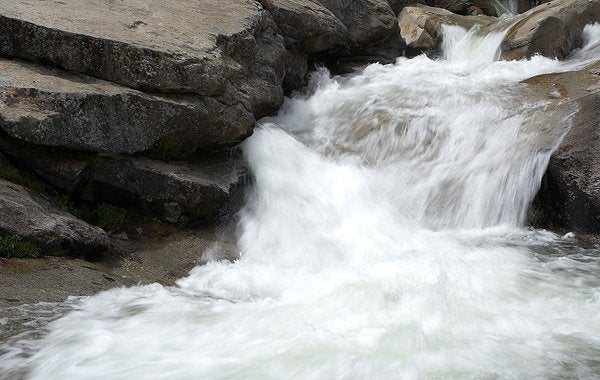
(Originally published at Ecocentric)
Scientists, researchers and other experts warn that the United States is entering an era of water scarcity. Back in 2003, the US General Accounting Office (now known as the US Government Accountability Office or GAO) projected that 36 states, under normal conditions, could face water shortages by 2013. However, those shortages were realized in 2008 -- five years sooner than predicted. Current forecasts suggest that climate change will only exacerbate the challenges of managing and protecting water resources.
Water scarcity has widespread implications for our nation. As a recent New York Times (Global Edition) article notes, water scarcity is increasingly a major constraint for the production of electricity. But what, in particular, does this mean for the nation's fleet of nuclear power plants?
Generating electricity with nuclear power is extremely water intensive, which is why nuclear plants are typically built on the shores of rivers, lakes and oceans. Many plants rely on submerged intake pipes to draw water -- hundreds of millions to a few billion gallons per day -- for use in cooling and condensing steam after it has turned the plants' turbines.
In the wake of a severe drought that rocked the Southeast United States in 2007, the Associated Press conducted an investigation of the nation's 104 nuclear reactors and found 24 located in areas experiencing the most severe levels of drought. Of those 24, all but two are situated on the shores of rivers and lakes. Because of the dry spell, water levels in those rivers and lakes were dangerously close to the minimums set by the US Nuclear Regulatory Commission (NRC). The concern at the time was that those water levels could drop below the intake pipes, or that the shallow water could become too warm to use for cooling purposes.
"Such scarcity can ultimately impact a plant's ability to meet electricity demand and operate safely," says David Lochbaum, Nuclear Safety Project Director for the Union of Concerned Scientists (USC).

Lochbaum authored a December 2007 Union of Concerned Scientists Issue Brief that
shed light on this problem by adeptly describing nuclear power's reliance on nearby bodies of water during both normal operation and when accidents occur. Lochbaum also looked at some of the problems encountered by nuclear plants when they cannot quench their insatiable thirst for cooling water.
Both the AP investigation and the UCS brief illustrate the critical, and sometimes tenuous, relationship that a nuclear power plant has with its water source. This is an issue that the federal government, including the Nuclear Regulatory Commission, needs to take a much closer look at, given the implications for particular plants that are seeking relicensing approval, or that have already been approved to operate for an additional 20 years.
Can nuclear power stand the heat?
It's worth noting that plant owners have played the "climate change" or "clean energy" cards to justify why they should be allowed to operate their nuclear power plants beyond their original 40-year permits. Of course, serious doubts have been raised about nuclear power's role in confronting the planet's changing climate, not the least of which is the vulnerability of some plants to drought and higher water temperatures.
If water levels fall too low, the submerged intake pipes will not be able to withdraw the amount of water required for safe operation of the plant. In a different scenario, if temperatures in the water body from which a plant withdraws are not cool enough, the amount of electricity the plant can produce could be reduced or the plant could be forced to shut down. That was the case in France during the Summer of 2009, when the French utility EDF had to shut down one-third of its reactors because the cooling water being withdrawn was too warm. The heat waves of 2003, 2006, and 2007 produced this effect on reactors around the world.
Drought and heat waves in the United States and other countries have highlighted one of nuclear power's most intractable vulnerabilities: water scarcity. If too much of our "climate change mitigation" strategy depends on nuclear power, we run the risk of jeopardizing our ability to slow the rate of climate change, (not to mention perpetuating the legacy of radioactive waste and pollution associated with nuclear power). When it comes to meeting our nation's energy needs in an environmentally-sustainable manner, we must solve the climate and water crises together, or risk exacerbating them both.
(Originally published at Ecocentric)